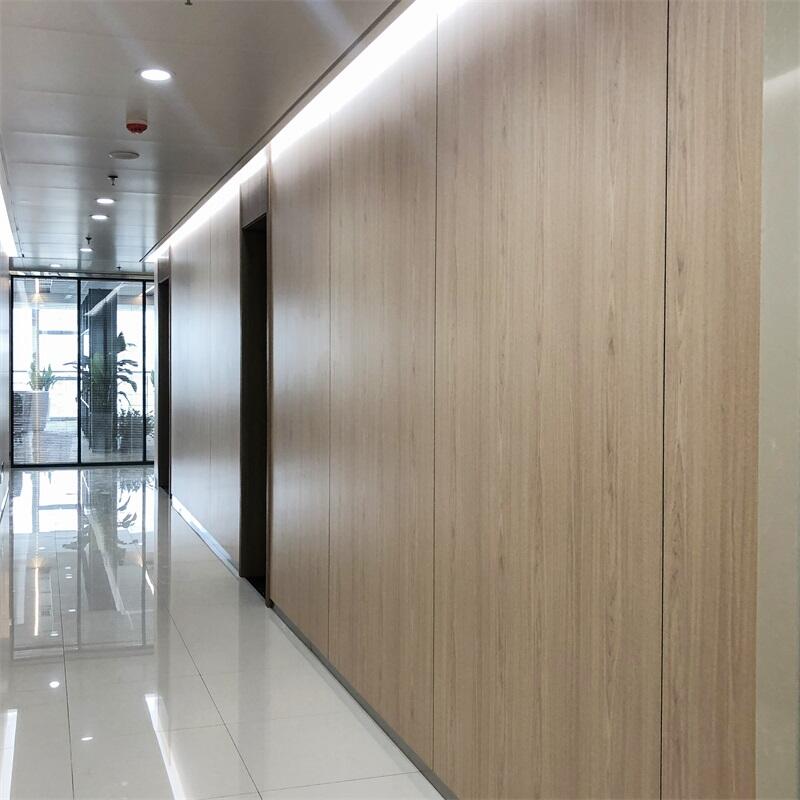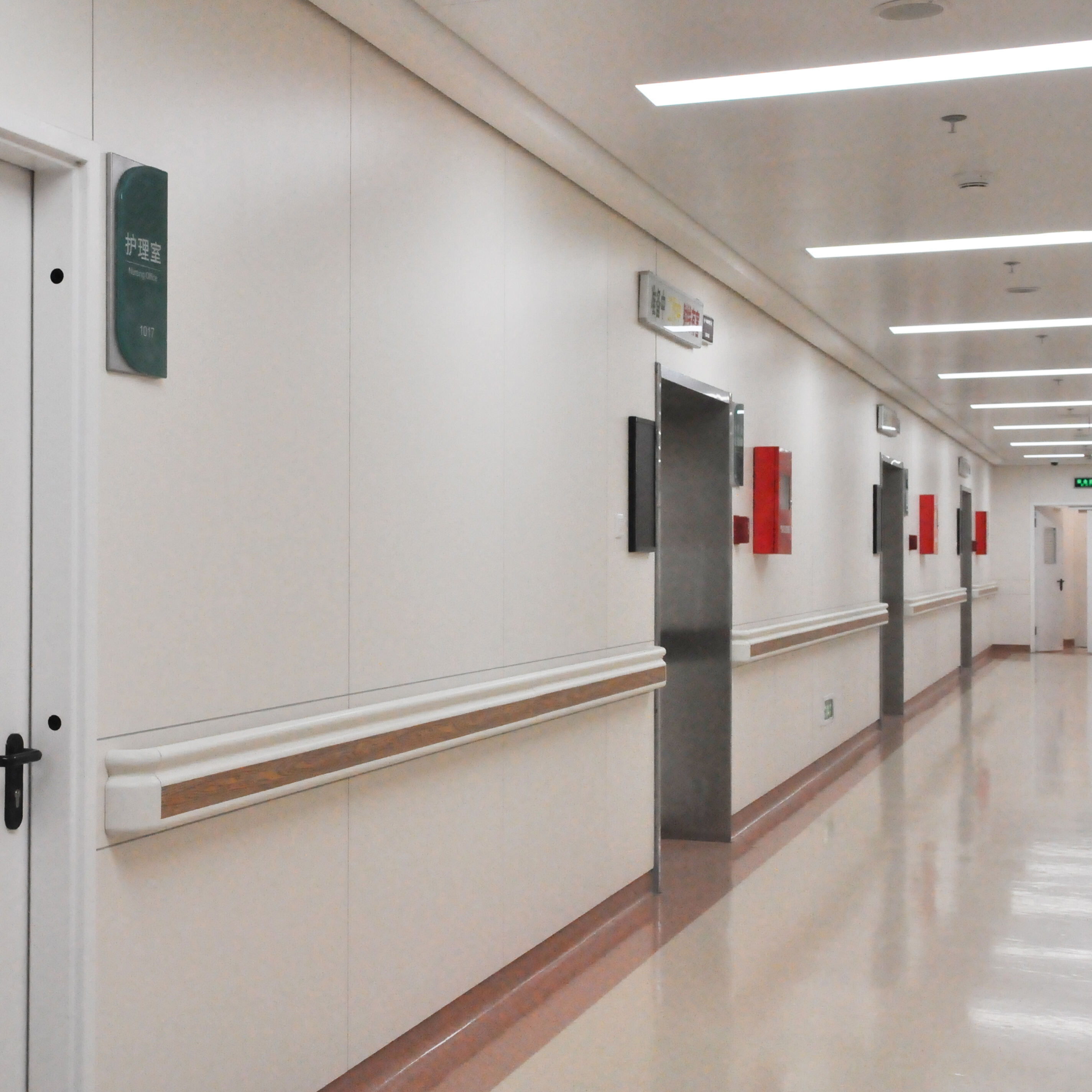Enhancing Office Aesthetics with Wall Cladding
Design Flexibility for Modern Workspaces
Wall cladding offers a diverse range of designs, colors, and textures, enabling businesses to create environments that foster creativity and productivity. This versatility allows organizations to update their office spaces easily without undergoing significant renovations, facilitating adaptation to evolving design trends. Recent projects in modern offices demonstrate how strategic use of wall cladding not only enhances office aesthetics but also positively impacts employee well-being and corporate image. By incorporating these features, companies can create vibrant, inspiring spaces that encourage innovation and collaboration, making wall cladding an essential tool for modern workplace design.
Customizable Finishes to Reflect Brand Identity
Customizable finishes in wall cladding offer companies the opportunity to reinforce their brand identity within their physical environments. Options such as laminates and textured finishes allow for unique and personalized designs that align with a company's vision, making office interiors an integral part of the corporate brand. A study by the American Society of Interior Designers highlights the significance of workplace aesthetics in attracting and retaining employees, showing that a well-designed office can lead to increased satisfaction and productivity. By utilizing wall cladding with customizable finishes, businesses can not only create visually appealing workspaces but also foster a strong corporate culture.
Functional Benefits of Wall Cladding in Office Design
Noise Reduction & Improved Acoustics
Wall cladding offers a practical solution for noise reduction, especially in bustling open office layouts. Many cladding materials are designed with sound-absorbing properties, helping to create a quieter, more focused work environment. Research indicates that improved acoustic management can enhance employee focus and productivity, which is essential in dynamic office settings. For instance, installing cladding strategically can help designate quiet zones within expansive workspaces, allowing employees to work without the constant disruption of office noise.
Durability Against High-Traffic Environments
Choosing durable wall cladding is a strategic investment for maintaining office aesthetics, even under heavy foot traffic. Materials such as high-pressure laminates (HPL) are known for their resistance to scratches and damage, thereby extending the lifespan of office designs. Not only do these materials withstand daily wear and tear, but they also reduce maintenance costs. Case studies reveal that offices employing robust cladding materials experience lower long-term maintenance expenses and maintain their aesthetic appeal over time. This durability is particularly beneficial in reception areas and corridors that experience high foot traffic.
Fire Resistance and Safety Compliance
Fire-resistant wall cladding is crucial to ensuring safety compliance with regulatory standards in commercial spaces. Materials that achieve a Class A fire rating provide significant benefits by reducing fire risk and enhancing occupant safety. Discussing the latest safety codes and integrating visuals or diagrams illustrating performance can substantiate the effectiveness of fire-resistant cladding. This compliance not only protects employees but also safeguards business investments and aligns with overall corporate safety policies. The role of cladding in boosting fire safety makes it indispensable in corporate environments, prioritizing both aesthetic and functional office design requirements.
Sustainable and Cost-Effective Solutions
Eco-Friendly Material Options
The selection of eco-friendly material options is increasingly crucial in office design, as businesses aim to reduce their environmental impact. Sustainable materials, such as those with recycled content or low-VOC emissions, are especially popular. According to recent statistics, companies that utilize eco-friendly materials in their office spaces can significantly reduce their carbon footprint. This is not only beneficial for the environment but also enhances a brand's reputation by aligning with corporate social responsibility goals. An example of this can be seen in brands that have embraced sustainable design choices, demonstrating their commitment to eco-friendly practices.
Long-Term Savings with Low Maintenance
Investing in low-maintenance wall cladding materials can yield considerable long-term savings for businesses. These materials not only reduce the frequency of maintenance but also cut down on associated costs. Statistics suggest that businesses opting for low-maintenance cladding see a decrease in upkeep costs over time, validating this as a smart financial investment. Case studies further demonstrate how companies have saved on maintenance expenses post-adoption of specific wall cladding solutions, illustrating the tangible benefits and reinforcing the cost-effectiveness of these choices.
Top Wall Cladding Products for Office Spaces
Cost-Effective HPL Wall Claddings (Modular & Fire-Resistant)
High-pressure laminates (HPL) are an affordable option for office wall cladding that does not compromise on safety and aesthetics. Known for their budget-friendly nature, they offer a wide range of designs and colors, making them suitable for diverse office environments. Their modular design not only simplifies installation but also allows for easy replacement of components. This flexibility is especially beneficial in dynamic office settings where adaptability is key. Many offices have already embraced HPL for their practical advantages, including fire resistance that meets safety standards.
Class A Fire-Rated Metal Cladding (Lightweight & Durable)
Metal wall cladding boards, like those formed from aluminum alloy honeycomb, boast extraordinary durability despite their lightweight nature. This makes them ideal for high-demand office environments that require resilient building materials. Offering a Class A fire rating, this type of cladding meets rigorous safety and health regulations, making it a top choice for enhancing safety in workplaces. In addition, the versatility in design options allows companies to incorporate trendy, aesthetic features that align with modern office vibes without trading off on durability or safety.
Internal Wood Cladding Panels (Eco-Friendly & Warm Aesthetics)
Wood cladding panels enhance the office design by providing a natural, warm aesthetic that boosts employee morale and satisfaction. Made from eco-friendly compact laminate materials, these panels offer durability alongside a sense of natural elegance. They are available in customizable sizes and finishes, allowing businesses to tailor aesthetics to fit office themes. Studies show that natural materials in office spaces can increase employee satisfaction significantly, enhancing both productivity and workplace happiness. Choosing sustainably sourced wood further supports environmental stewardship and corporate responsibility.
Choosing the Right Cladding for Your Office
Factors to Consider: Traffic, Acoustics, and Budget
When deciding on the ideal wall cladding for an office, several factors must be considered to ensure both functionality and cost-effectiveness. First, identifying traffic patterns within the office is crucial in selecting materials that can withstand the wear and tear of high-traffic areas. High-pressure laminates (HPL) are an excellent choice due to their durability and ease of maintenance, which makes them perfect for busy corridors. Secondly, acoustic considerations are essential to creating a conducive working environment; incorporating cladding options that minimize noise can significantly enhance employee productivity. Finally, budget constraints must be analyzed, as the cost of materials can vary significantly. Striking a balance between initial expense and long-term durability often leads to more economical decisions in the long run.
Integration with Office Layouts and Partitions
Integrating wall cladding with existing office layouts requires strategic planning to achieve a cohesive design. Cladding can effectively enhance the office's aesthetics while aligning with its architectural style. For example, using wood cladding can provide a warm and inviting atmosphere, which can be accentuated in open office plans. Additionally, partitions play a critical role in defining spaces within an office; selecting cladding that complements these structures can result in a harmonious design. Practical visual aids and layout suggestions can facilitate the integration process, offering valuable insights on optimizing office space for both aesthetics and functionality. When done correctly, this integration elevates the overall experience for employees and visitors alike.



